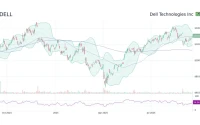The price of the Avantis token is in a precarious position. As of this writing, AVNT is trading near $1.13, a figure that represents a sharp decline from its recent peak and places it perilously close to a significant psychological and technical floor. The charts delineate a clear line in the sand at the $1.00–$1.01 level. Should that support fail, the next logical destination is in the neighborhood of $0.80.
This is the quantitative reality. The technical indicators are unambiguous. The Relative Strength Index (RSI) is currently at 22, a reading that signals a heavily oversold condition. Yet, the Moving Average Convergence Divergence (MACD) indicator remains steadfastly bearish, suggesting that downward momentum has not yet been exhausted. To reverse this trajectory, the price must reclaim the $1.50 mark, a level that seems distant from its current standpoint.
Online, the qualitative data presents a starkly different picture. Jesse Pollak, the founder of the Base Chain on which Avantis is built, remains publicly supportive. On September 26, he stated Avantis is "bringing based energy," adding that "prices keep pricing but builders won’t stop building." This is the classic founder’s response: focus on the long-term vision, dismiss the short-term price action. It’s a narrative echoed by a segment of the community. A chart posted by user @cyrilXBT on September 29 presented the precipitous drop not as a crisis, but as a generational buying opportunity.
Here we have a fundamental discrepancy. The market’s pricing mechanism is signaling distress, while the project’s proponents are signaling strength. My analysis suggests the answer to this divergence lies not in the platform’s daily operations, but in the mechanics of its token launch—an event that appears to have prioritized short-term shock and awe over long-term price stability.
Good Protocol, Flawed Math: Deconstructing the AVNT Price Collapse
The Ghost in the Airdrop
To understand the current pressure on the AVNT token, we must look back to its inception on September 9, 2025. Avantis itself is an impressive piece of infrastructure. It’s a decentralized exchange for perpetual futures built on Layer 2, backed by capital from Peter Thiel, and has processed over $27 billion in trading volume. It offers leveraged trading on cryptocurrencies and, more interestingly, Real-World Assets like forex and commodities. The protocol architecture is robust, utilizing a dual-oracle system (Pyth and Chainlink) for reliable price feeds and a USDC vault model for liquidity.

The launch of its native token, AVNT, was executed with a strategy of overwhelming force. The token appeared almost simultaneously on a slate of top-tier exchanges: Binance, Coinbase, Upbit, Bithumb, and Crypto.com. Analysts at the time described the scale of these coordinated listings as "remarkable" for a new asset. The immediate result was a surge in visibility and price, culminating in an all-time high of $2.66 on September 22. The market cap was cited as being around $230 million—to be more exact, $228 million based on available data feeds.
But this manufactured momentum contained the seeds of its own reversal. Concurrent with this launch was the distribution of a massive airdrop. The project distributed $10 million in AVNT tokens to early adopters. This represented 12.5% of the total 1 billion token supply, and critically, it was distributed fully unlocked. Another 10 million tokens, or 1% of the supply, were announced as a HODLer Airdrop by Binance on September 16.
And this is the part of the data that I find genuinely puzzling. I've analyzed hundreds of tokenomic models, and distributing over a tenth of the total supply, with no vesting schedule, into the hands of early users at the peak of a marketing blitz is an extremely aggressive strategy. It creates a massive, immediate pool of potential sellers who have a zero-dollar cost basis. For them, any price is pure profit. It is therefore not surprising that after the token hit its all-time high, bearish divergences began appearing in the RSI and MACD. The selling had begun.
The narrative from supporters to "buy the dip" ignores this fundamental supply overhang. The current price action isn't necessarily a reflection of the Avantis DEX's utility or its future potential. It is the direct, predictable consequence of injecting an enormous amount of "free" supply into the market. The price is not falling because "builders stopped building"; it is falling because the laws of supply and demand are asserting themselves against an artificially inflated launch price. The market is simply absorbing the 12.5% of the supply that was given away.
The path forward is now purely mathematical. The bulls need to absorb this sell pressure and establish a new floor. The $1.00 level is the first test. If it holds, it may signal that the airdrop supply has been sufficiently distributed into the hands of buyers with a higher cost basis and longer-term conviction. If it fails, it suggests the market has not yet found a price at which it is willing to absorb the remaining sell-side liquidity. The builders may keep building, but the sellers are still selling.
An Unforced Error in Tokenomics
The story of the Avantis protocol and the AVNT token are two different things. The protocol itself appears robust, well-funded, and is generating significant volume. It is a legitimate contender in the decentralized derivatives space.
The AVNT token, however, is currently a case study in how a poorly structured token distribution can undermine a successful launch. The price collapse from $2.66 was not a black swan event; it was the gravitational pull of a 12.5% fully unlocked airdrop. The current struggle at $1.13 is not a referendum on the platform's value, but the market's painful process of discovering a price that can withstand the immense, built-in sell pressure. The builders are fine; the tokenomics were flawed from the start.
Reference article source:









